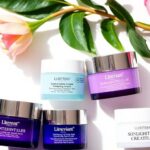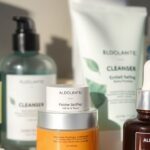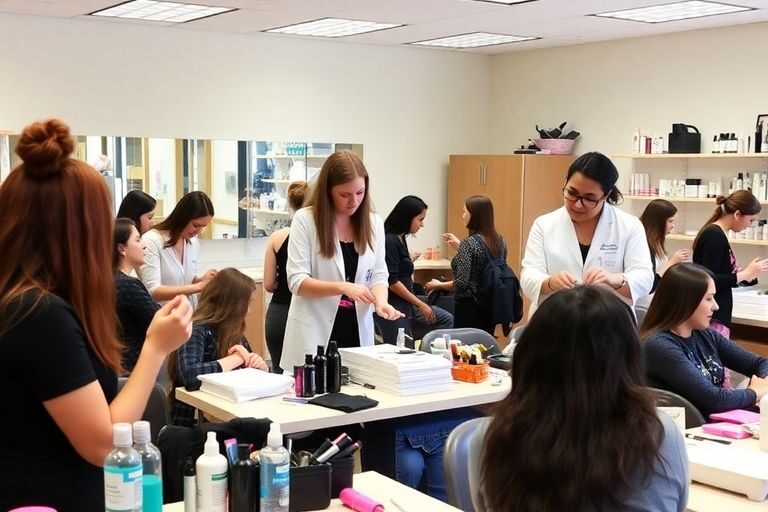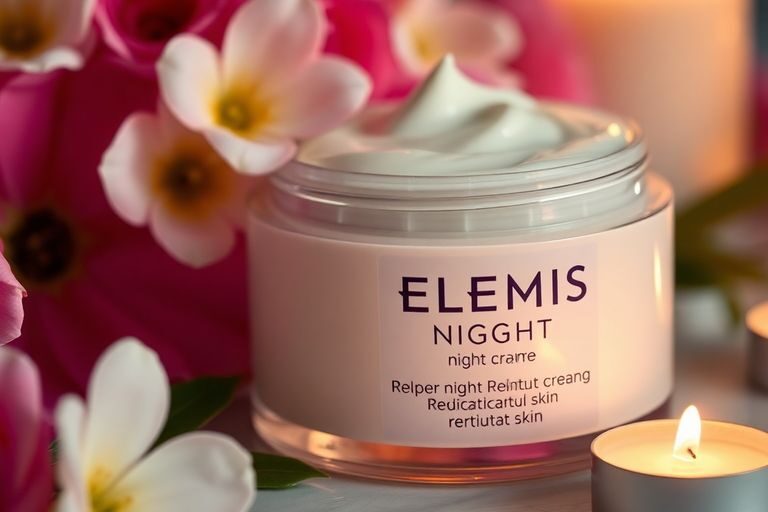In the fast-paced world we live in, it’s easy to overlook the importance of skincare. But a proper facial care routine is essential for achieving that healthy, radiant glow we all desire. This guide will walk you through the necessary steps to create a skincare routine tailored to your needs, helping you to maintain beautiful skin for the long haul. Whether you’re battling dryness, oiliness, or just looking to enhance your natural beauty, these tips will set you on the right path to glowing skin.
Key Takeaways
- Cleansing is vital; choose a gentle cleanser suited to your skin type.
- Exfoliate regularly to remove dead skin cells and promote a fresh appearance.
- Hydration is key; find a moisturiser that works for you and layer products effectively.
- Target specific skin concerns with the right treatments and serums.
- Never skip sun protection; daily SPF is crucial for preventing damage.
Cleansing: The Foundation of Radiant Skin
I reckon the most important step in any skincare routine is cleansing. It’s like prepping a canvas before painting – you need a clean base for everything else to work properly. Let’s get into the nitty-gritty.
Importance of Gentle Cleansing
Gentle cleansing is key because it removes dirt, oil, and impurities without stripping your skin of its natural oils. I’ve made the mistake of using harsh cleansers before, and trust me, it’s not fun. Your skin ends up feeling tight, dry, and irritated.
- Removes makeup, pollution, and daily grime.
- Prevents clogged pores and breakouts.
- Allows other skincare products to penetrate better.
I always tell my friends to think of cleansing as the foundation of their skincare house. If the foundation is weak, the whole structure crumbles. A gentle cleanser keeps your skin happy and healthy, ready to absorb all the goodness from your other products.
Choosing the Right Cleanser for Your Skin Type
Finding the right cleanser is a bit like finding the perfect pair of jeans – it takes some trial and error. But once you find it, it’s a game-changer. Here’s a quick guide:
- Oily Skin: Look for gel or foaming cleansers that contain ingredients like salicylic acid to help control oil production. I’ve found that foaming cleansers work best for me when my skin is feeling particularly oily.
- Dry Skin: Creamy or oil-based cleansers are your best bet. They’ll cleanse your skin without stripping it of moisture. Avoid anything with alcohol or harsh sulphates.
- Sensitive Skin: Opt for fragrance-free, hypoallergenic cleansers with minimal ingredients. Look for calming ingredients like chamomile or aloe vera.
- Combination Skin: This can be tricky, but generally, a gentle, pH-balanced cleanser works well. You might need to experiment to find what suits you best.
Cleansing Techniques for Optimal Results
It’s not just about what you use, but how you use it. Here are a few tips I’ve picked up over the years:
- Double Cleanse: Especially important if you wear makeup. First, use an oil-based cleanser to remove makeup and sunscreen, then follow with a gentle cleanser to clean your skin. I swear by double cleansing at night – it makes such a difference.
- Use Lukewarm Water: Hot water can strip your skin of its natural oils, while cold water might not effectively remove dirt and oil. Lukewarm water is the sweet spot.
- Massage Gently: Use your fingertips to massage the cleanser into your skin in circular motions for about 30-60 seconds. This helps to loosen dirt and stimulate circulation.
- Pat Dry: Avoid rubbing your skin dry with a towel. Instead, gently pat it dry to avoid irritation.
Exfoliation: Renewing Your Skin’s Glow

I reckon exfoliation is where the magic really starts to happen. It’s all about getting rid of those dead skin cells that make your face look dull. Think of it as spring cleaning for your face – out with the old, in with the new!
Understanding Different Exfoliation Methods
There are two main ways to exfoliate: physical and chemical. Physical exfoliants are things like scrubs with tiny beads or brushes. Chemical exfoliants use acids like AHAs (alpha hydroxy acids) or BHAs (beta hydroxy acids) to dissolve dead skin cells.
- Physical Exfoliation: Scrubs, brushes, microdermabrasion.
- Chemical Exfoliation: AHAs (glycolic, lactic acid), BHAs (salicylic acid), enzyme peels.
I’ve tried both, and honestly, it depends on my mood and what my skin needs. If I want that instant gratification of feeling super smooth, I’ll go for a gentle scrub. But if I’m dealing with breakouts, a BHA salicylic acid is my go-to.
How Often Should You Exfoliate?
This is a big one, and it’s different for everyone. Over-exfoliating is a real thing and can leave your skin red, irritated, and just generally unhappy. I started off exfoliating once a week, and now I do it about twice a week, but I really listen to my skin. If it feels sensitive, I back off.
Here’s a general guideline:
- Sensitive Skin: Once a week or less.
- Normal Skin: 1-2 times a week.
- Oily/Acne-Prone Skin: 2-3 times a week.
Post-Exfoliation Care
After you’ve exfoliated, your skin is going to be more sensitive, so it’s important to be gentle. I always follow up with a hydrating serum and a good moisturiser. And, of course, sunscreen during the day is a must! Think of it like this:
- Hydrate: Use a hydrating serum or essence.
- Moisturise: Apply a nourishing moisturiser to lock in hydration.
- Protect: Always use sunscreen during the day, even if it’s cloudy.
Exfoliating regularly can really transform your skin, but it’s all about finding the right balance. Don’t be afraid to experiment and see what works best for you, but always err on the side of caution. Your skin will thank you for it!
Hydration: Quench Your Skin’s Thirst

We all know that drinking water is good for us, but did you know it’s just as important to hydrate your skin from the outside? Think of your skin as a sponge – when it’s dry, it’s brittle and doesn’t function well. When it’s properly hydrated, it’s plump, supple, and ready to take on the day. Let’s dive into how to keep your skin feeling its best.
The Role of Moisturisers in Skincare
Moisturisers are the workhorses of hydration. They create a barrier on your skin that locks in moisture and prevents water loss. I think of them as a protective shield against the elements. They also help to keep your skin feeling soft and smooth. Without a good moisturiser, your skin can become dry, itchy, and even more prone to wrinkles. It’s a step you really can’t skip, no matter your skin type.
Choosing the Right Hydrating Ingredients
Not all moisturisers are created equal. It’s all about finding the right ingredients for your skin’s specific needs. Here are a few key players to look out for:
- Hyaluronic acid: This is a moisture magnet! It can hold up to 1000 times its weight in water, drawing moisture from the air into your skin. It’s a great choice for all skin types.
- Glycerin: Another humectant, meaning it attracts moisture. It’s also very gentle, making it suitable for sensitive skin.
- Ceramides: These are lipids (fats) that are naturally found in your skin. They help to strengthen your skin’s barrier and prevent moisture loss. If you have dry or irritated skin, look for products containing ceramides.
- Shea butter: A rich emollient that softens and smooths the skin. It’s particularly good for dry and very dry skin.
I always tell my friends to read the ingredient list carefully. Don’t be afraid to experiment to find what works best for you. What works for one person might not work for another, and that’s perfectly okay.
Layering Hydration for Maximum Effect
Sometimes, one moisturiser just isn’t enough. That’s where layering comes in. The idea is to apply products in order of their consistency, from thinnest to thickest. Here’s a simple routine I like to follow:
- Serum: Start with a hydrating serum, like one containing hyaluronic acid. This will deliver a concentrated dose of moisture deep into your skin.
- Moisturiser: Next, apply your regular moisturiser to lock in the serum and provide a protective barrier.
- Facial Oil (Optional): If you have very dry skin, you can add a facial oil as the final step. This will create an extra layer of protection and help to seal in all the moisture. Consider substituting one glass of water daily with a serving of raw fruits or vegetables, which can help maintain hydration levels more effectively.
Don’t forget that hydration isn’t just about what you put on your skin. Drinking plenty of water and eating a healthy diet are also essential for keeping your skin looking its best. And remember, a dermatologist in London can offer personalised recommendations based on your skin’s specific needs and the local climate.
Targeted Treatments: Addressing Specific Skin Concerns
Okay, so we’ve got the basics down – cleansing, exfoliating, hydrating, and sun protection. Now, let’s talk about those pesky specific skin concerns that need a little extra TLC. This is where targeted treatments come in, and trust me, they can make a world of difference.
Identifying Your Skin Concerns
First things first, you need to figure out exactly what you’re dealing with. Are we talking acne? Maybe some fine lines starting to creep in? Or perhaps hyperpigmentation from too much sun? Knowing your enemy is half the battle.
- Take a good, hard look in the mirror. No judgement, just observation.
- What do you actually see? Redness? Bumps? Dark spots?
- Consider what triggers your skin issues. Stress? Certain foods? The weather?
It might even be worth keeping a skin diary for a week or two. Jot down what you’re using, what you’re eating, and how your skin is behaving. You might spot some patterns you hadn’t noticed before. If you are suffering from a chronic inflammatory skin condition, lichen planus may be the cause.
Effective Ingredients for Acne and Ageing
Right, so you know what you’re up against. Now, let’s arm ourselves with the right ingredients. Here’s a quick rundown of some of the big hitters:
- Acne: Salicylic acid is your friend. It helps to unclog pores and reduce inflammation. Benzoyl peroxide is another good one, but be careful – it can be drying. Retinoids are also great for acne, but they can be irritating, so start slow.
- Ageing: Retinoids are the gold standard here too. They boost collagen production and help to reduce fine lines and wrinkles. Peptides are another good option, as they help to firm the skin. And don’t forget antioxidants like vitamin C, which protect against free radical damage.
It’s important to remember that everyone’s skin is different. What works for your best mate might not work for you. Don’t be afraid to experiment a little, but always introduce new products slowly to avoid irritation.
Incorporating Serums and Treatments
Serums are your secret weapon here. They’re packed with concentrated ingredients and designed to penetrate deeply into the skin. Here’s how to make the most of them:
- Apply your serum after cleansing and toning, but before moisturising.
- A few drops is all you need. Gently pat it into your skin.
- Be patient! It can take several weeks to see results.
Don’t go overboard with the treatments. More isn’t always better. In fact, using too many active ingredients at once can irritate your skin and do more harm than good. Start with one or two targeted treatments and gradually introduce others as needed. If you are looking for a targeted skincare routine a dermatologist can help.
Sun Protection: Shielding Your Skin from Damage
I can’t stress enough how important sun protection is. Seriously, it’s the cornerstone of any good skincare routine. We’re not just talking about avoiding sunburn here; we’re talking about preventing premature ageing, reducing the risk of skin cancer, and keeping your skin looking its best for years to come. I’ve seen the damage the sun can do, and trust me, prevention is way easier than cure.
Understanding UV Rays and Their Effects
Okay, so let’s break down what we’re actually protecting ourselves from. The sun emits different types of ultraviolet (UV) rays, but the two main ones we need to worry about are UVA and UVB.
- UVB rays are the ones that cause sunburn. They’re strongest between 10 am and 4 pm.
- UVA rays penetrate deeper into the skin and contribute to premature ageing, like wrinkles and sunspots. They’re present all day long, year-round, and can even penetrate glass. Scary, right?
- Both UVA and UVB rays can damage your skin’s DNA, which can lead to skin cancer. So, yeah, it’s a big deal.
Choosing the Right Sunscreen
Finding the right sunscreen can feel like a mission, but it doesn’t have to be! Here’s what I look for:
- Broad Spectrum: This means the sunscreen protects against both UVA and UVB rays. It’s non-negotiable.
- SPF 30 or Higher: SPF stands for Sun Protection Factor. SPF 30 blocks about 97% of UVB rays, while SPF 50 blocks about 98%. I usually go for SPF 30 for everyday use, but I’ll bump it up to SPF 50 if I’m going to be spending a lot of time outdoors. Dermatologists offer essential tips on sunscreen application.
- Water Resistance: This doesn’t mean waterproof! It just means the sunscreen will stay effective for a certain amount of time while you’re sweating or swimming. Make sure to reapply as directed on the label.
- Ingredients: I prefer mineral sunscreens with zinc oxide or titanium dioxide. They’re generally considered safer for sensitive skin and the environment. But honestly, the best sunscreen is the one you’ll actually use, so find one you like the feel of!
Daily Sun Protection Tips
Making sun protection a daily habit is key. Here’s how I incorporate it into my routine:
- Apply Every Morning: I put on sunscreen every single morning, even if it’s cloudy. It’s just part of my routine, like brushing my teeth. I apply it after my moisturiser and before my makeup.
- Don’t Forget Often-Missed Spots: Ears, neck, the back of your hands, and the tops of your feet are easy to forget. I make a conscious effort to cover these areas.
- Reapply Regularly: Reapply sunscreen every two hours, or more often if you’re sweating or swimming. I keep a travel-sized sunscreen in my bag for easy reapplication on the go.
- Seek Shade: Sunscreen is great, but it’s not a suit of armour. I try to seek shade during the sun’s peak hours (10 am to 4 pm), especially in the summer.
- Wear Protective Clothing: Hats, sunglasses, and long sleeves can provide extra protection from the sun. I love a good wide-brimmed hat for sunny days.
Sun protection isn’t just about aesthetics; it’s about health. By making it a daily habit, you’re investing in the long-term health and appearance of your skin. And honestly, that’s an investment worth making.
Nighttime Routine: Repair and Restore
I always look forward to my nighttime skincare routine. It’s not just about cleaning my face; it’s my little ritual to wind down and prep my skin for some serious overnight repair. Think of it as giving your skin a chance to recover from the day’s stresses – pollution, makeup, and just general wear and tear.
The Importance of Nighttime Skincare
During the day, my skin is in defence mode, battling UV rays and environmental aggressors. But at night, while I’m sleeping, it switches to repair mode. That’s why a targeted nighttime routine can make a huge difference. My skin is more receptive to active ingredients, so I make sure to use products that really work while I sleep. It’s like giving my skin a mini spa treatment every night!
Key Products for Overnight Repair
Here’s what my typical nighttime routine looks like:
- Makeup Removal: First things first, I never skip this step. I use a gentle cleansing oil to melt away makeup, sunscreen, and grime. It’s so important to start with a clean slate.
- Double Cleanse: I follow up with a mild cleanser to ensure all traces of makeup and oil are gone. This double cleanse really preps my skin for the next steps.
- Exfoliation (1-2 times a week): On exfoliation nights, I use a chemical exfoliant with AHAs or BHAs. This helps to remove dead skin cells and promote cell turnover. I’m careful not to overdo it, though, as that can lead to irritation.
- Toner: I apply a toner to balance my skin’s pH levels and prep it for serums.
- Treatment Serum: This is where I target my specific skin concerns. I alternate between a retinol serum for anti-ageing and a hydrating serum with hyaluronic acid.
- Eye Cream: I gently pat on an eye cream to hydrate the delicate skin around my eyes and tackle fine lines.
- Moisturiser: I finish with a rich moisturiser to lock in all the goodness and keep my skin hydrated overnight.
- Face Oil (Optional): If my skin is feeling extra dry, I’ll add a few drops of face oil to seal in moisture.
- Lip Care: I apply a nourishing lip balm to keep my lips hydrated while I sleep.
Creating a Relaxing Nighttime Ritual
My nighttime skincare routine isn’t just about the products; it’s also about creating a relaxing ritual. I like to dim the lights, put on some calming music, and really take my time with each step. It’s a great way to de-stress and prepare for a good night’s sleep. Plus, a little self-care goes a long way in boosting my mood and confidence.
I find that consistency is key. Even on the busiest nights, I try to stick to my routine as much as possible. It’s a small investment of time that pays off big time in the long run. Waking up with refreshed, glowing skin makes it all worthwhile.
Consistency: The Key to Long-Term Radiance
I’ve found that skincare isn’t a sprint; it’s a marathon. You won’t see amazing results overnight, and that’s okay! The real magic happens when you stick with it. It’s about building habits that support your skin’s health day in and day out. Let’s get into how to make that happen.
Building a Sustainable Skincare Routine
Think of your skincare routine like brushing your teeth – you do it every day without fail, right? That’s the kind of consistency we’re aiming for. Start small, with just a few key steps, and gradually add more as you get comfortable. Don’t overwhelm yourself with too many products at once. A simple routine done consistently is way better than a complicated one you only manage occasionally. For example, you can start with a gentle cleanser, moisturiser and sunscreen.
Here’s a basic routine to get you started:
- Morning: Cleanser, moisturiser, sunscreen.
- Evening: Cleanser, treatment (if applicable), moisturiser.
- Weekly: Exfoliation (1-2 times per week).
Tracking Your Progress
It can be hard to see changes when you look at your skin every day. That’s why tracking your progress can be super helpful. Here are a few ways I like to do it:
- Take photos: Once a week, take a photo of your face in the same lighting. This makes it easier to spot subtle improvements over time.
- Keep a journal: Jot down any changes you notice in your skin, whether it’s dryness, breakouts, or increased radiance. Note any new products you’re trying and how your skin reacts.
- Use a habit tracker: There are loads of apps and templates out there that can help you track your skincare routine and stay consistent.
Tracking your progress isn’t just about seeing how far you’ve come; it’s also about identifying what’s working and what’s not. If you notice that a particular product is causing irritation, you can adjust your routine accordingly.
Adjusting Your Routine as Your Skin Changes
Your skin’s needs will change over time, so your routine shouldn’t stay the same forever. Factors like the seasons, your age, and your lifestyle can all affect your skin. Pay attention to these changes and be willing to tweak your routine as needed. For example, you might need a richer moisturiser in the winter or a lighter one in the summer. If you’re dealing with new skin concerns, like acne or ageing, you might want to incorporate targeted treatments into your routine.
Here are some things to consider when adjusting your routine:
- Seasonal changes: Adjust your moisturiser and sunscreen based on the weather.
- Ageing: Incorporate anti-ageing ingredients like retinol or peptides.
- Lifestyle changes: If you’re experiencing more stress, focus on calming and soothing products.
Remember, consistency is key, but flexibility is also important. By building a sustainable routine, tracking your progress, and adjusting as needed, you’ll be well on your way to achieving long-term radiance.
Final Thoughts on Your Skincare Journey
So there you have it, a straightforward guide to help you achieve that glowing skin you’ve always wanted. Remember, it’s all about consistency and finding what works best for your skin type. Don’t rush the process; good things take time. Stick to your routine, keep an eye on how your skin reacts, and adjust as needed. And if you ever feel stuck, don’t hesitate to reach out for professional advice. Your skin is unique, and it deserves the best care possible. Here’s to healthier, happier skin!
Frequently Asked Questions
What is the best way to cleanse my skin?
To cleanse your skin effectively, use a gentle cleanser suitable for your skin type. Cleanse twice daily, in the morning and evening, to remove dirt and oil.
How often should I exfoliate my skin?
You should exfoliate your skin once or twice a week. This helps remove dead skin cells and keeps your skin looking fresh.
What moisturiser is best for my skin type?
Choose a moisturiser based on your skin type: lightweight gels for oily skin, creamy formulas for dry skin, and sensitive skin should opt for fragrance-free products.
How can I protect my skin from sun damage?
Use a broad-spectrum sunscreen with at least SPF 30 every day, even if it’s cloudy. Reapply every two hours when outdoors.
What should I include in my nighttime skincare routine?
In your nighttime routine, include a gentle cleanser, a nourishing moisturiser, and any targeted treatments like serums for your specific skin concerns.
Why is consistency important in skincare?
Being consistent with your skincare routine helps achieve long-term results. Regular use of products allows your skin to adapt and improve over time.






